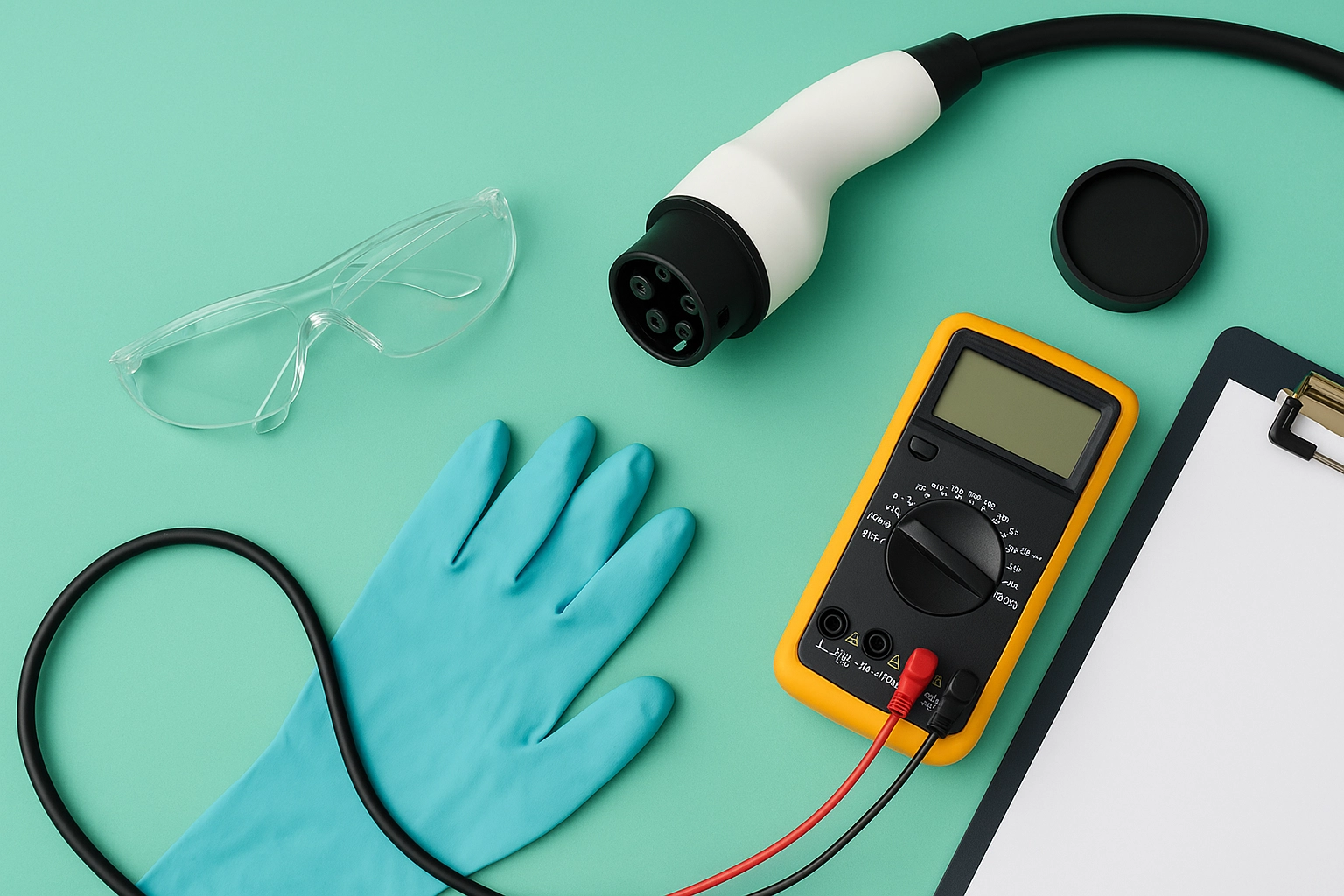SAE J2836 2 Plug in Vehicle Communication Interface Testing
The SAE J2836 standard is a critical component of ensuring interoperability and communication between plug-in electric vehicles (PEVs) and their charging infrastructure. This test ensures that the communication interface, which allows for bidirectional data exchange, functions correctly according to the specified protocols.
The SAE J2836 2 standard specifically addresses the physical layer and electrical characteristics of the communication interface used in PEV charging systems. It is essential because it helps prevent issues such as miscommunication or incomplete charge sessions, which could lead to safety hazards or user frustration.
During this testing process, various parameters are verified to ensure compliance with the standard. These include signal integrity checks, data transfer rates, and error correction mechanisms. The test setup typically involves a controlled environment where both the PEV and the charging station are connected through their respective communication interfaces.
The importance of this test cannot be overstated in the context of the automotive industry. As electric vehicles continue to grow in popularity, it is crucial that all components involved in the charging process work seamlessly together. This includes not only the vehicle itself but also the infrastructure and systems responsible for managing the charge session.
One of the key aspects of this test is ensuring that the communication interface can handle different types of data packets efficiently. These packets may include status updates, request commands, and various other pieces of information necessary for a successful charging session. By testing these interfaces according to SAE J2836 2 standards, manufacturers and suppliers can ensure their products meet industry requirements.
The test also evaluates the robustness of the communication interface under various environmental conditions. This includes temperature variations, humidity levels, and other factors that could potentially affect performance. Such evaluations are essential for ensuring reliability across different geographical locations where PEVs may operate.
In addition to functional testing, there is an emphasis on security aspects within this standard. With increasing concerns about cybersecurity in the automotive sector, it becomes vital to assess how well these interfaces protect against unauthorized access or malicious attacks. Proper implementation of encryption methods and secure authentication protocols forms part of what constitutes a compliant test.
Understanding that compliance with SAE J2836 2 is not just about meeting technical specifications but also ensuring user experience, many stakeholders focus on achieving seamless integration between vehicles and chargers. This involves continuous monitoring post-installation to identify any potential issues early on so they can be addressed promptly.
To summarize, the SAE J2836 2 Plug in Vehicle Communication Interface Testing is essential for maintaining high standards of safety, efficiency, and reliability within the electric vehicle ecosystem. By adhering strictly to this standard during manufacturing processes and subsequent quality checks, companies play a significant role in fostering trust among consumers while contributing positively towards sustainability goals.
Applied Standards
| Standard | Description |
|---|---|
| SAE J2836-2 | This standard specifies the physical layer and electrical characteristics of the communication interface used in PEV charging systems. |
| ISO/IEC 17025 | Ensures that testing laboratories meet internationally recognized quality standards for technical competence. |
The application of these standards ensures consistency and accuracy in the testing process, thereby enhancing trustworthiness across various stakeholders involved in the development and deployment of electric vehicles.
Why Choose This Test
- Ensures safe and efficient charging sessions for plug-in electric vehicles.
- Promotes interoperability between different brands and models of PEVs.
- Aids in reducing the risk of miscommunication leading to safety hazards or incomplete charge sessions.
- Contributes to better user experiences by ensuring reliable performance regardless of environmental conditions.
By selecting this test, organizations demonstrate their commitment to maintaining high-quality standards and adhering to industry best practices. It helps in building a robust foundation for long-term success within the rapidly evolving field of electric mobility.
International Acceptance and Recognition
- The SAE J2836 2 standard is widely recognized by major automotive manufacturers worldwide as part of their quality assurance programs.
- It has been adopted in numerous countries, contributing to global harmonization efforts in the electric vehicle sector.
- Many regulatory bodies use this standard as a benchmark for approving new models and technologies.
The international acceptance and recognition of SAE J2836 2 underscore its importance in promoting widespread adoption of plug-in electric vehicles. Its role extends beyond mere compliance; it fosters innovation by encouraging continuous improvement towards more efficient, secure, and user-friendly charging solutions.





